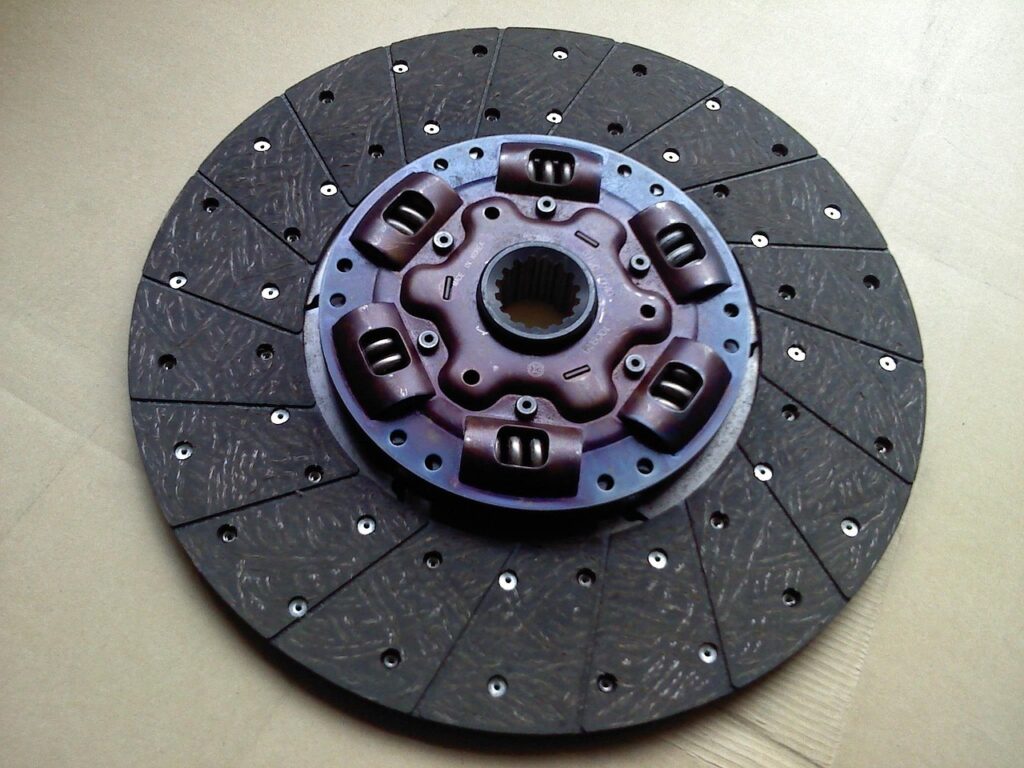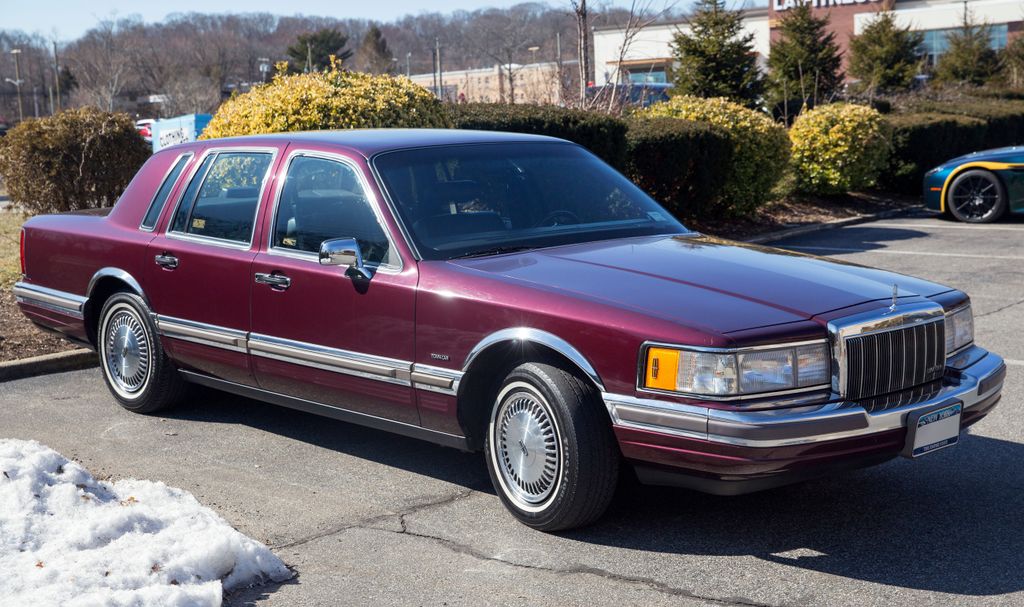
The 1990s were far more than just a decade of grunge music and dial-up internet; for American automotive enthusiasts, it marked a monumental resurgence of horsepower. After the trying times of the 1970s and the hopeful yet transitional 1980s, the nineties arrived with a decisive roar. American manufacturers, facing stiff competition, not only refused to yield but actively innovated, fulfilling a promise of unbridled performance to U.S. drivers.
This era witnessed the full return of American performance machines, significantly expanding the definition of a muscle car. For the first time, the automotive landscape welcomed proper muscle car sedans, incredibly potent pickup trucks, and even a groundbreaking muscle SUV. The ’90s proved to be a transformative decade, blending electronic sophistication with a deeply revived passion for raw horsepower. It demonstrated how American car manufacturers could adapt and regain their dominant position globally.
These extraordinary vehicles championed a delicate balancing act, harmonizing raw power with evolving emission compliance and modern design cues. They forged a new wave of collectible automotive icons. While the historical spotlight often shines on the 1960s or 1970s for rare American cars, the 1990s quietly birthed its own stable of legendary machines that stayed remarkably true to their core roots. Each car we highlight is a powerful emblem of its time, skillfully bridging classic muscle heritage and cutting-edge contemporary technology. Join us as we explore the first half of these truly remarkable and influential vehicles.
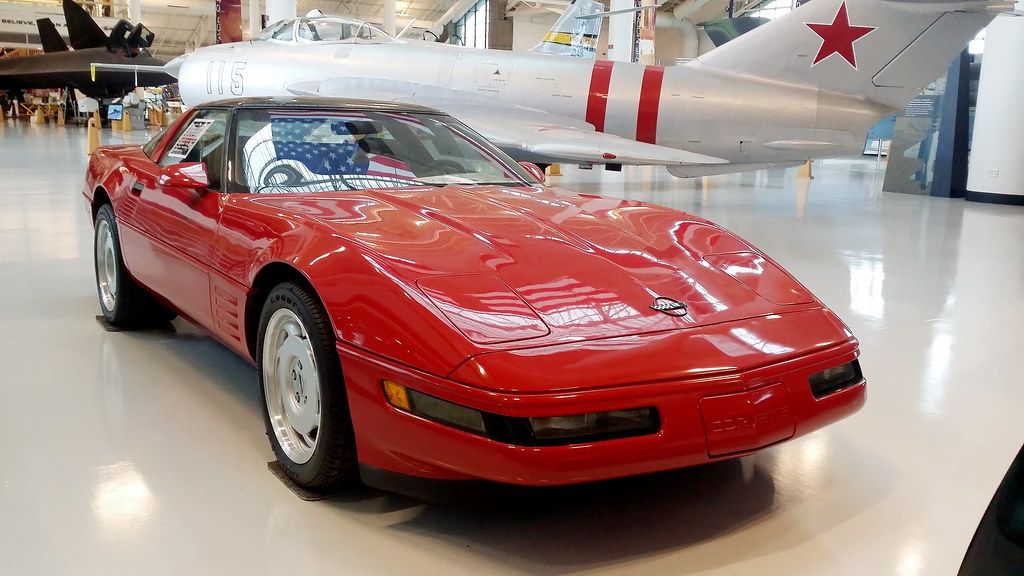
1. **1990–1995 Chevrolet Corvette ZR-1**In the world of American performance, few names command as much respect as the Chevrolet Corvette, and its ZR-1 variant from the early 90s was rightfully dubbed the “King of the Hill.” This engineering marvel, known internally by that very moniker, was the product of an innovative collaboration with Lotus. This partnership literally shattered all preconceived notions of what a Corvette could be, dramatically ushering in the era of the legendary LT5 engine. It was a revolutionary dual overhead cam (DOHC) V8 that immediately signaled a new, elevated performance ceiling for GM’s flagship sports car.
The LT5 engine was an absolute marvel of its time, a sophisticated 5.7L V8 powerhouse. It initially pushed an impressive 375 horsepower, a figure that later climbed to an even more formidable 405 hp. This advanced powerplant utilized cutting-edge Multi-Port Fuel Injection and boasted an aluminum block, a crucial design choice that significantly contributed to reduced weight and vastly enhanced overall performance. Such technological advancements allowed the ZR-1 to achieve genuine supercar figures, effortlessly blasting from 0 to 60 mph in approximately 4.5 seconds. This was a blistering pace that rivaled the best in the world during the early 1990s.
Beyond its sheer raw speed and technological prowess, the ZR-1 also held an aura of exclusivity due to its strictly limited production numbers. With fewer than 7,000 units built in total throughout its production run, this ensured its distinct limited-production aura and made it a coveted machine from day one. This era-defining vehicle profoundly reasserted the Corvette’s global reputation for performance. It masterfully married advanced electronic fuel injection systems with a robust chassis that could confidently hold its own on the world’s most demanding racetracks. Today, auction interest and values for these pioneering DOHC V8 machines are seeing a significant rise, acknowledging its profound role in the American performance revival.
Car Model Information: 2004 Chevrolet Corvette Base
Name: Chevrolet Corvette
Caption: 2021 Chevrolet Corvette C8
Manufacturer: Chevrolet
Production: 1953–present
ModelYears: bulleted list
Assembly: bulleted list
Class: Sports car
BodyStyle: coupé
Layout: Front-engine, rear-wheel-drive layout,Rear mid-engine, rear-wheel-drive layout
Categories: 1950s cars, 1960s cars, 1970s cars, 1980s cars, 1990s cars
Summary: The Chevrolet Corvette is a line of American two-door, two-seater sports cars manufactured and marketed by General Motors under the Chevrolet marque since 1953. Throughout eight generations, indicated sequentially as C1 to C8, the Corvette is noted for its performance, distinctive styling, lightweight fiberglass or composite bodywork, and competitive pricing. The Corvette has had domestic mass-produced two-seater competitors fielded by American Motors, Ford, and Chrysler; it is the only one continuously produced by a United States auto manufacturer. It serves as Chevrolet’s halo car.
In 1953, GM executives accepted a suggestion by Myron Scott, then the assistant director of the Public Relations department, to name the company’s new sports car after the corvette, a small, maneuverable warship. Initially, a relatively modest, lightweight 6‑cylinder convertible, subsequent introductions of V8 engines, competitive chassis innovations, and rear mid-engined layout have gradually moved the Corvette upmarket into the supercar class. In 1963, the second generation was introduced in coupe and convertible styles. The first three Corvette generations (1953–1982) employed body-on-frame construction, and since the C4 generation, introduced in 1983 as an early 1984 model, Corvettes have used GM’s unibody Y‑body platform. All Corvettes used front mid-engine configuration for seven generations, through 2019, and transitioned to a rear mid-engined layout with the C8 generation.
Initially manufactured in Flint, Michigan, and St. Louis, Missouri, the Corvette has been produced in Bowling Green, Kentucky, since 1981, which is also the location of the National Corvette Museum. The Corvette has become widely known as “America’s Sports Car.” Automotive News wrote that after being featured in the early 1960s television show Route 66, “the Corvette became synonymous with freedom and adventure,” ultimately becoming both “the most successful concept car in history and the most popular sports car in history.”
Get more information about: Chevrolet Corvette
Buying a high-performing used car >>>
Brand: Chevrolet Model: Corvette
Price: $23,892 Mileage: 29,579 mi.
Read more about: Unleashing the Beasts: The 10 Rarest American Cars of the 1990s – Muscle, Innovation, and Collectible Icons

2. **1991 GMC Syclone**Before the era of high-performance SUVs and trucks became a common sight, GMC boldly ventured into truly uncharted automotive territory with the introduction of the Syclone. This was no ordinary, utilitarian pickup truck; it was a compact powerhouse, meticulously fitted with a turbocharged V6 engine and an innovative full-time all-wheel-drive system. The groundbreaking result was an unexpected street beast, a true “muscle truck” that possessed the uncanny ability to embarrass far more expensive sports cars at the drag strip, completely defying conventional automotive wisdom.
Underneath its deceptively understated exterior, the Syclone housed a potent Turbo 4.3L V6 engine, meticulously engineered to churn out around 280 horsepower and a robust 350 lb-ft of torque. Its full-time AWD system was a veritable game-changer for the segment, providing relentless traction that enabled blistering 0–60 mph times in the mid-4-second range. This astounding acceleration figure was quicker than many exotic cars of its very own day. It was achieved thanks to its minimal turbo lag and a significant, immediate surge of low-end torque, making it incredibly responsive from a standstill.
With approximately 2,995 units produced during its limited run, the Syclone was a true limited-production marvel. It was perhaps somewhat overshadowed at the time by GMC’s more conventional pickups, yet it was undeniably destined for an enduring cult status among performance enthusiasts. It fundamentally redefined the “muscle truck” concept, presenting a truly surreal sight in an era largely defined by conservative automotive styling: a seemingly humble GMC pickup truck confidently devouring Porsches. Today, it stands as a highly revered anomaly, a powerful testament to audacious engineering within the rich tapestry of 1990s muscle lore.
Read more about: Unleashing the Beasts: The 10 Rarest American Cars of the 1990s – Muscle, Innovation, and Collectible Icons

3. **1992 GMC Typhoon**Building directly upon the groundbreaking success and innovative engineering of the Syclone, GMC unleashed yet another automotive sensation just a year later: the Typhoon. This remarkable vehicle applied the very same, proven turbocharged magic and all-wheel-drive prowess to a compact SUV platform. It shared many of its core mechanical components with its legendary pickup truck sibling. In doing so, the Typhoon effectively forged and championed the concept of a high-performance SUV, carving out a brand-new niche well before this segment became widespread. The Typhoon unequivocally proved that utility vehicles could indeed deliver exhilarating, sports-car-rivaling performance.
Equipped with the identical, formidable turbo 4.3L V6 engine that powered the Syclone, the Typhoon also delivered roughly 280 horsepower. This prodigious output ingeniously transformed a conventional family hauler into a genuine speed demon. Its sophisticated all-wheel-drive (AWD) layout was instrumental, providing enhanced traction and stability, enabling truly remarkable 0–60 mph blasts in just about 5 seconds. This level of acceleration was revolutionary for a vehicle segment primarily known for its practicality and family transportation duties, powerfully showcasing GMC’s forward-thinking vision for a versatile yet undeniably powerful vehicle.
Production of the Typhoon totaled around 4,697 units from 1992 to 1993, solidifying its status as another highly sought-after, limited-run collectible. Interestingly, unlike the more spartan Syclone, the Typhoon also embraced a distinct luxury angle. It featured comfortable and upscale leather seats and refined interior trim elements. This more comfort-oriented cabin significantly distinguished it from its more raw pickup cousin, offering a blend of performance and daily usability. The Typhoon’s unique combination of muscle car-level power and SUV practicality presaged the entire modern performance SUV market, solidifying its place as a prime target for discerning collectors who seek something truly offbeat and historically influential.
Car Model Information: 1992 GMC Jimmy Typhoon
Name: GMC Typhoon
Production: 1992–1993,4697 produced
Manufacturer: GMC (marque)
Class: Mid-size car,Sport utility vehicle
BodyStyle: Sport utility vehicle
Related: GMC Syclone,GMC Jimmy
Engine: Chevrolet 90° V6 engine#Turbocharged LB4 4.3L V6
Transmission: Turbo-Hydramatic#THM700R4 / 4L60 / 4L60E / 4L65E / 4L70E,automatic transmission
Wheelbase: 100.5 in (2553 mm)
Length: 170.3 in (4326 mm)
Width: 68.2 in (1732 mm)
Height: 60.0 in (1524 mm)
Weight: 3822 lb (1734 kg)
Layout: Front-engine, four-wheel-drive layout
Categories: Articles with short description, Cars introduced in 1991, Commons category link is on Wikidata, GMC vehicles, Mid-size sport utility vehicles
Summary: The GMC Typhoon is a high-performance SUV, produced from 1992 until 1993 by GMC. The Typhoon was based on the 1991 GMC Syclone.
Get more information about: GMC Typhoon
Buying a high-performing used car >>>
Brand: GMC Model: Typhoon
Price: $28,991 Mileage: 127,944 mi.
Read more about: Unleashing the Beasts: The 10 Rarest American Cars of the 1990s – Muscle, Innovation, and Collectible Icons
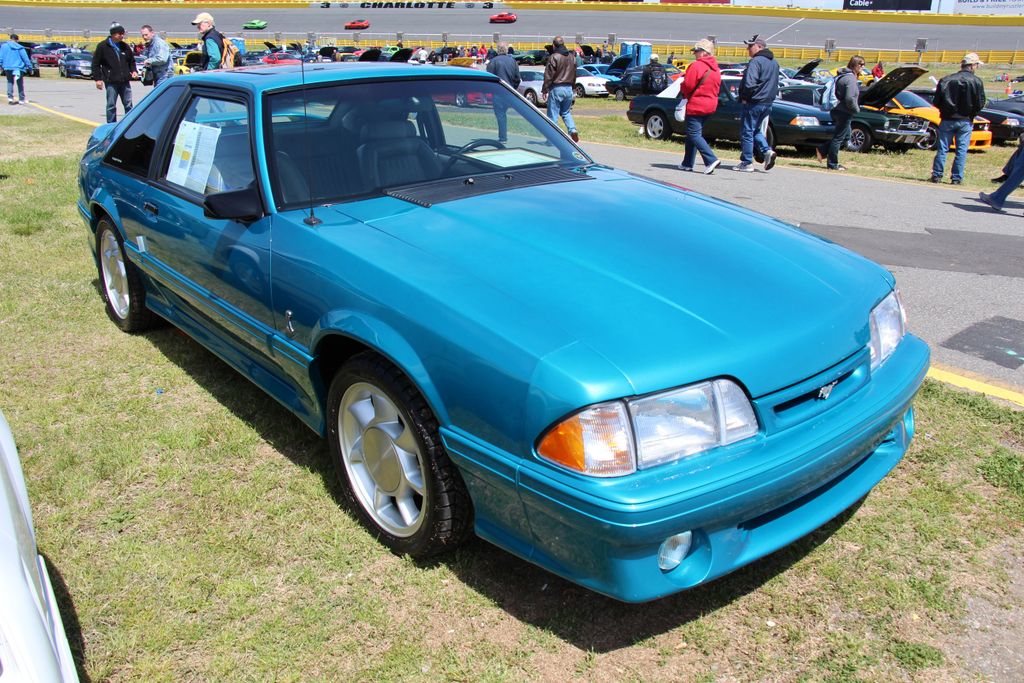
4. **1992–1993 SVT Mustang Cobra & Cobra R**The early 1990s ushered in a profoundly significant turning point for Ford’s iconic Mustang with the momentous debut of the Special Vehicle Team (SVT) in 1992. This groundbreaking initiative officially signaled a new era of factory-sanctioned performance for the beloved Fox-body Mustang platform. It meticulously refined its already impressive capabilities and set entirely new benchmarks for what a performance pony car could achieve. The original Mustang Cobra was a powerful testament to this evolutionary leap, masterfully enhancing the well-loved 5.0L engine formula, while the even rarer and more extreme Cobra R pushed the performance envelope even further, painstakingly shedding weight for unparalleled track dominance.
At the very heart of the SVT Cobra lay a meticulously tuned High-Output 5.0L small block engine, producing an impressive approximately 235 horsepower. This increase was thanks to carefully designed, slightly modified cylinder heads and an improved intake manifold. This robust engine expertly bridged the gap between old-school pushrod power and updated electronic fuel injection. It offered dedicated enthusiasts a wonderfully refined yet undeniably potent driving experience. The true standout, however, was the uncompromising Cobra R. This highly specialized variant was conceived and designed purely for unadulterated speed and ultimate handling, unapologetically omitting creature comforts like rear seats, a radio, and air conditioning to achieve maximum weight reduction.
Production numbers emphatically highlight the extreme exclusivity and desirability of these special models: only 4,993 Cobra hatchbacks were built for the 1993 model year, but a mere 107 Cobra R models ever saw the light of day. Their performance was more than respectable for a mid-sized 1990s coupe, consistently achieving quarter-mile times in the low 14s. Enthusiasts deeply revere these Cobras for their remarkable ability to seamlessly blend classic American muscle characteristics with modern electronic fuel injection and significant chassis upgrades. The Cobra R, in particular, remains a mythical “unicorn” in the Mustang lineage, a supremely limited-production pony car crafted exclusively for hardcore drivers. It unequivocally laid the foundational groundwork for future track-oriented Mustangs from Ford.
Car Model Information: 2024 Ford Mustang Mach-E GT
Name: Ford Mustang
Caption: 2018 Ford Mustang GT 5.0
Aka: Ford T5 (Germany)
Manufacturer: Ford Motor Company
Production: March 1964 – present
ModelYears: 1965–present
Class: Unbulleted list
BodyStyle: Unbulleted list
Layout: Front-engine, rear-wheel-drive layout
Categories: 1970s cars, 1980s cars, 1990s cars, 2+2 coupés, 2000s cars
Summary: The Ford Mustang is a series of American automobiles manufactured by Ford. In continuous production since 1964, the Mustang is currently the longest-produced Ford car nameplate. Currently in its seventh generation, it is the fifth-best selling Ford car nameplate. The namesake of the “pony car” automobile segment, the Mustang was developed as a highly styled line of sporty coupes and convertibles derived from existing model lines, initially distinguished by “long hood, short deck” proportions.
Originally predicted to sell 100,000 vehicles yearly, the 1965 Mustang became the most successful vehicle launch since the 1927 Model A. Introduced on April 17, 1964 (16 days after the Plymouth Barracuda), over 400,000 units were sold in its first year; the one-millionth Mustang was sold within two years of its launch. In August 2018, Ford produced the 10-millionth Mustang; matching the first 1965 Mustang, the vehicle was a 2019 Wimbledon White convertible with a V8 engine.
The success of the Mustang launch led to multiple competitors from other American manufacturers, including the Chevrolet Camaro and Pontiac Firebird (1967), AMC Javelin (1968), and Dodge Challenger (1970). It also competed with the Plymouth Barracuda, which was launched around the same time. The Mustang also had an effect on designs of coupes worldwide, leading to the marketing of the Toyota Celica and Ford Capri in the United States (the latter, by Lincoln-Mercury). The Mercury Cougar was launched in 1967 as a unique-bodied higher-trim alternative to the Mustang; during the 1970s, it included more features and was marketed as a personal luxury car.
From 1965 until 2004, the Mustang shared chassis commonality with other Ford model lines, staying rear-wheel-drive throughout its production. From 1965 to 1973, the Mustang was derived from the 1960 Ford Falcon compact. From 1974 until 1978, the Mustang (denoted Mustang II) was a longer-wheelbase version of the Ford Pinto. From 1979 until 2004, the Mustang shared its Fox platform chassis with 14 other Ford vehicles (becoming the final one to use the Fox architecture). Since 2005, Ford has produced two generations of the Mustang, each using a distinct platform unique to the model line.
Through its production, multiple nameplates have been associated with the Ford Mustang series, including GT, Mach 1, Boss 302/429, Cobra (separate from Shelby Cobra), and Bullitt, along with “5.0” fender badging (denoting 4.9 L OHV or 5.0 L DOHC V8 engines).
Get more information about: Ford Mustang
Buying a high-performing used car >>>
Brand: Ford Model: Mustang
Price: $41,628 Mileage: 3,879 mi.
Read more about: Unleashing the Beasts: The 10 Rarest American Cars of the 1990s – Muscle, Innovation, and Collectible Icons
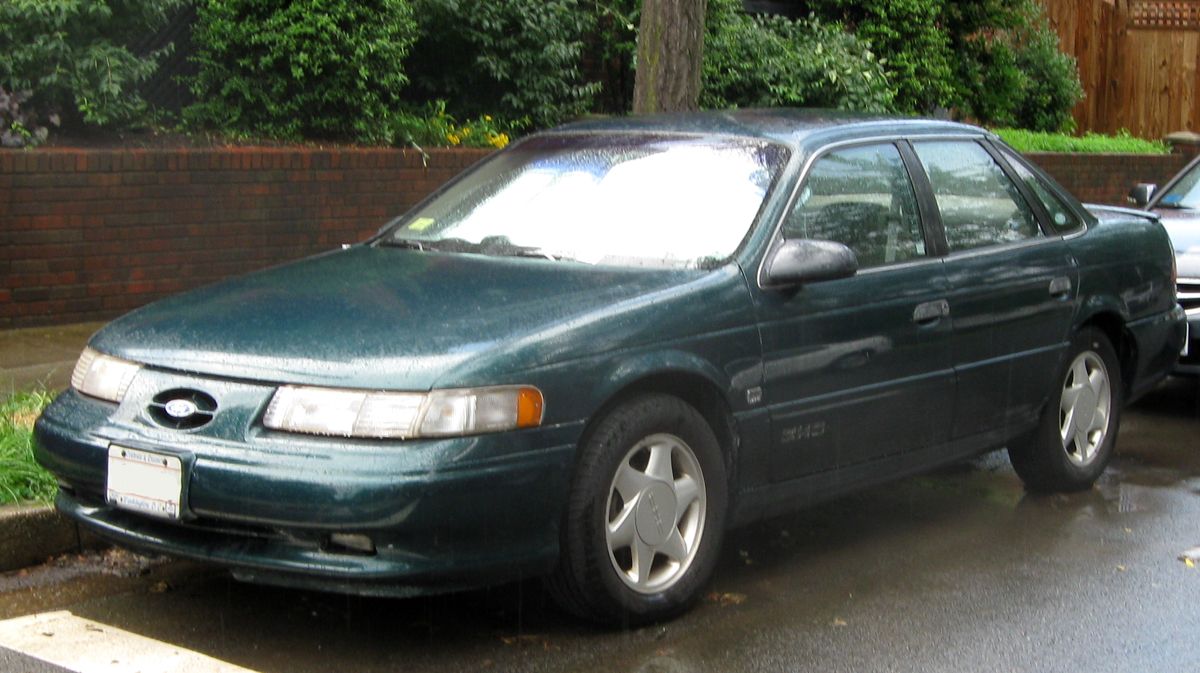
5. **1992–1995 Ford Taurus SHO (Manual Versions)**When the revolutionary Ford Taurus first burst onto the automotive scene in the mid-1980s, it instantly redefined the family sedan market. It introduced a refreshingly contemporary design, innovative features, and a commitment to aerodynamic styling. Yet, Ford harbored a delightful secret weapon hidden within its practical guise: the Super High Output (SHO) variant. This was no ordinary, unassuming family hauler; it was a bona fide sleeper performance package, ingeniously co-developed with Yamaha, featuring a highly sophisticated DOHC V6 engine, particularly potent and engaging in its manual-transmission form.
At the very heart of the Taurus SHO’s unexpected athleticism was its advanced 3.0L DOHC V6 engine. This remarkable powerplant was a true engineering marvel, capable of revving to an exhilarating 7,000 rpm, passionately producing around 220 horsepower. This was an astonishing figure for a V6 sedan of that era, allowing it to punch far above its weight class. What truly set the early SHOs apart was the inclusion of a precise 5-speed manual transmission. This rare-for-its-segment offering provided a surprising and genuinely sporty feel in what was otherwise a mainstream, unassuming family sedan. This harmonious combination allowed it to deliver a level of performance that profoundly belied its practical appearance.
Manual-transmission SHOs were never massive sales volume leaders, often finding themselves overshadowed by the more ubiquitous automatic configurations, which adds to their distinct rarity and desirability among today’s collectors. Despite its discreet, practical guise, the SHO delivered impressively robust performance, capable of sprinting from 0 to 60 mph in the mid-6-second range. This allowed it to handily outrun many more overtly sporty V8 coupes of its day, earning it a reputation as a true stealth performer. The Taurus SHO powerfully proved that a family sedan could indeed be both eminently sporty and supremely practical, laying crucial groundwork for future generations of performance sedans. While not always recognized as a conventional “muscle” car, it remains an undisputed gem for enthusiasts who deeply appreciate refined engineering combined with discreet, yet potent, performance.
Car Model Information: 2024 Genesis GV70 2.5T AWD
Name: Ford Taurus SHO
Manufacturer: Ford Motor Company
ModelYears: 1989–1999,2010–2019
Related: Ford Taurus
Class: Mid-size
Layout: Front-engine, front-wheel-drive layout
Designer: Jack Telnack
Categories: 1980s cars, 1990s cars, 2000s cars, 2010s cars, All articles with unsourced statements
Summary: The Ford Taurus SHO (Super High Output) is the high-performance variant of the Ford Taurus. Originally intended as a limited-production model, the SHO was produced for the first three generations of the model line, from the 1989 to the 1999 model years. After an 11-year hiatus, the name was revived for 2010, and continued in use until the 2019 discontinuation of the Taurus model line.
In contrast with standard versions of the Taurus, the Taurus SHO did not have a Mercury Sable counterpart; however, the 2010–2019 SHO served as the basis for the Ford Police Interceptor Sedan (replacing the long-running Ford Crown Victoria Police Interceptor). The final version is the only Taurus ever offered with the twin-turbocharged EcoBoost V6 engine.
The first three generations of the SHO were assembled at Atlanta Assembly (Hapeville, Georgia); the fourth generation was assembled at Chicago Assembly (Chicago, Illinois).
Get more information about: Ford Taurus SHO
Buying a high-performing used car >>>
Brand: Ford Model: Taurus SHO
Price: $39,995 Mileage: 20,074 mi.
Read more about: Unleashing the Beasts: The 10 Rarest American Cars of the 1990s – Muscle, Innovation, and Collectible Icons
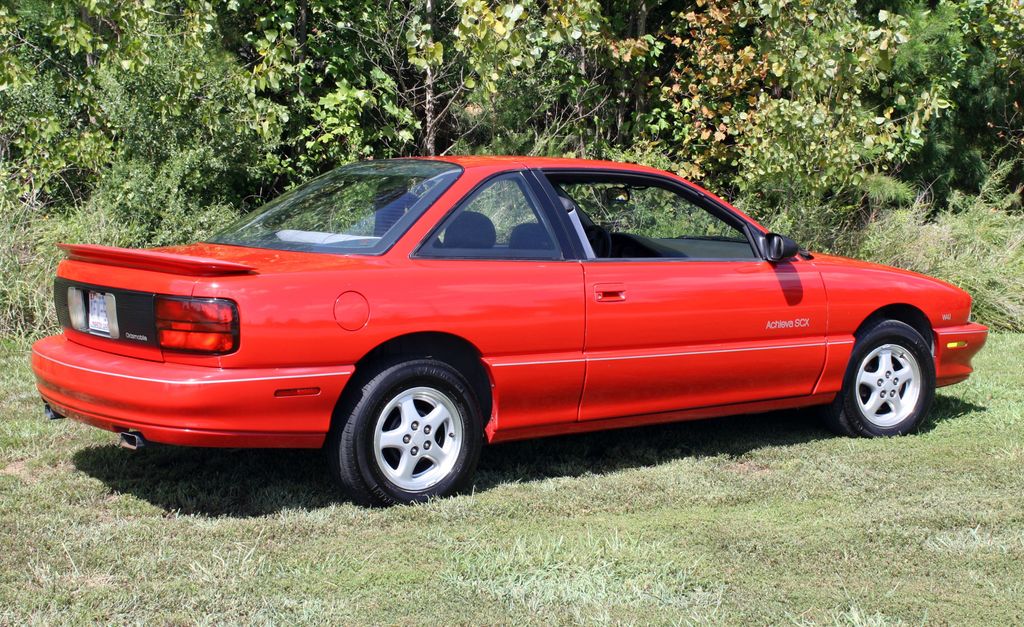
6. **1992–1995 Oldsmobile Achieva SCX W41**For many automotive enthusiasts, Oldsmobile might not be the first name that springs to mind when discussing raw 1990s muscle. Yet, hidden within its catalog was a formidable contender that truly pushed the boundaries of four-cylinder performance: the Achieva SCX W41. This rarely-seen front-wheel-drive coupe wasn’t just another compact car; it was born directly from Oldsmobile’s ambitious SCCA racing endeavors, meticulously designed for homologation, and aimed at showcasing what a small displacement engine could truly achieve when pushed to its absolute limits.
Under the hood, the Achieva SCX W41 housed a remarkable 2.3L Quad 4 engine with Dual Overhead Cams (DOHC), a powerplant that was nothing short of exceptional for its era. This high-revving four-cylinder delivered a robust 190 horsepower, an impressive figure that allowed this nimble coupe to belie its size and surprise many larger, more powerful rivals. Beyond the engine, Oldsmobile engineers implemented a suite of crucial chassis tweaks, including enhanced suspension, uprated brakes, and unique gearing, all meticulously tuned to make the SCX W41 a formidable track-ready machine.
Its limited production numbers—fewer than 1,000 total SCX W41 models—only add to its mystique and collector appeal. Often overshadowed by Oldsmobile’s more mainstream offerings, this niche model is a testament to GM’s dedication to track performance and its willingness to innovate with small-displacement, high-output engines. The Achieva SCX W41 stands as a fascinating, albeit often overlooked, piece of 1990s performance lore, proving that muscle could come in unexpected packages and drive configurations.
Read more about: Unleashing the Beasts: The 10 Rarest American Cars of the 1990s – Muscle, Innovation, and Collectible Icons
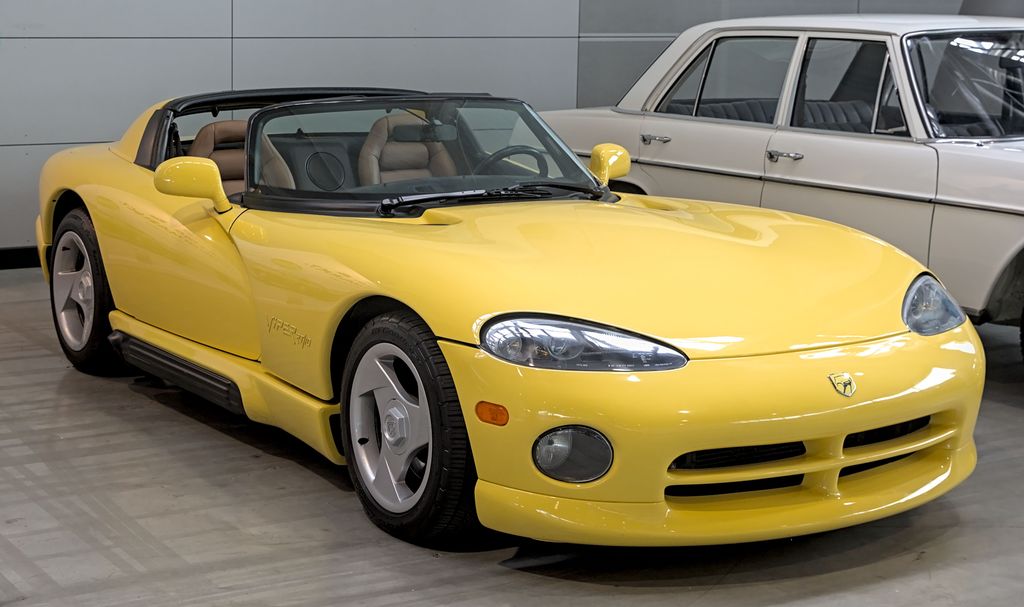
7. **1993 Dodge Viper RT/10 (Gen 1)**When Chrysler unleashed the Dodge Viper RT/10 upon the automotive world in the early 1990s, it wasn’t just a new car; it was a defiant roar, a visceral return to the bare-bones, untamed spirit of classic American performance. Conceived with a deliberate nod to the legendary Shelby Cobra ethos, this open-top roadster was pure, unadulterated muscle. With no roof, no Anti-lock Braking System (ABS), and a stark absence of modern driver aids, the Gen 1 Viper was as raw and challenging as any modern production car dared to be, designed explicitly for the purist seeking an unfiltered driving experience.
At the heart of this beast lay a colossal 8.0L V10 engine, an undeniable powerhouse delivering a staggering 400 horsepower and an immense 465 lb-ft of torque. This prodigious output, combined with its lightweight tube-frame chassis and composite body panels, enabled the Viper to rocket from 0 to 60 mph in approximately 4 seconds. Its distinctive side-exit exhaust pipes only amplified its aggressive persona, emitting a thunderous symphony that left no doubt about its formidable capabilities. Early production was intentionally limited, with just over 200 units built for the 1992 model year, a number that modestly ramped up in subsequent years, cementing its exclusivity.
The Viper RT/10 was more than just a car; it was a halo vehicle for Chrysler, a bold statement that rejected the era’s creeping automotive sophistication in favor of an unapologetic embrace of raw power and unbridled mechanical prowess. Its design was revolutionary, and its performance was brutal, making it an instant icon. Today, these rare early builds are highly coveted by collectors, their value soaring as they are increasingly appreciated for their status as truly uncompromised and legendary performance machines.
Car Model Information: 2022 Mazda CX-5 2.5 S Premium
Name: Dodge Viper (SR I)
Production: 1991–1995
ModelYears: 1992–1995
Assembly: New Mack Assembly,Detroit,Michigan
Designer: Tom Gale (designer)
Class: Sports car
BodyStyle: Targa top
Engine: Viper engine#First generation,V10 engine
Powerout: 400 hp
Abbr: on
Transmission: BorgWarner,Borg-Warner_T-56_transmission,manual transmission
Wheelbase: 2446 mm
Length: 4450 mm
Width: 1920 mm
Height: 1120 mm
Weight: 1490 kg
Successor: Dodge Viper (SR II)
Layout: FR layout
Related: Rinspeed Veleno
Aka: Chrysler Viper (Europe)
Categories: Articles with short description, Cars discontinued in 1995, Cars introduced in 1992, Dodge vehicles, Short description matches Wikidata
Summary: The Dodge Viper (SR I) is the first-generation Viper sports car, manufactured by American automobile manufacturer Dodge. It was originally tested in January 1989 as a prototype, then later introduced in 1991 as a pace car for the Indianapolis 500, then finally going on sale in January 1992.
The SR I began the Dodge Viper model lineup, which would continue on until 2017, consisting of five generations.
The SRI was replaced by the updated SRII after a series of updates in 1995.
Get more information about: Dodge Viper (SR I)
Buying a high-performing used car >>>
Brand: Dodge Model: Viper RT/10
Price: $25,680 Mileage: 32,780 mi.
Read more about: Unleashing the Beasts: The 10 Rarest American Cars of the 1990s – Muscle, Innovation, and Collectible Icons
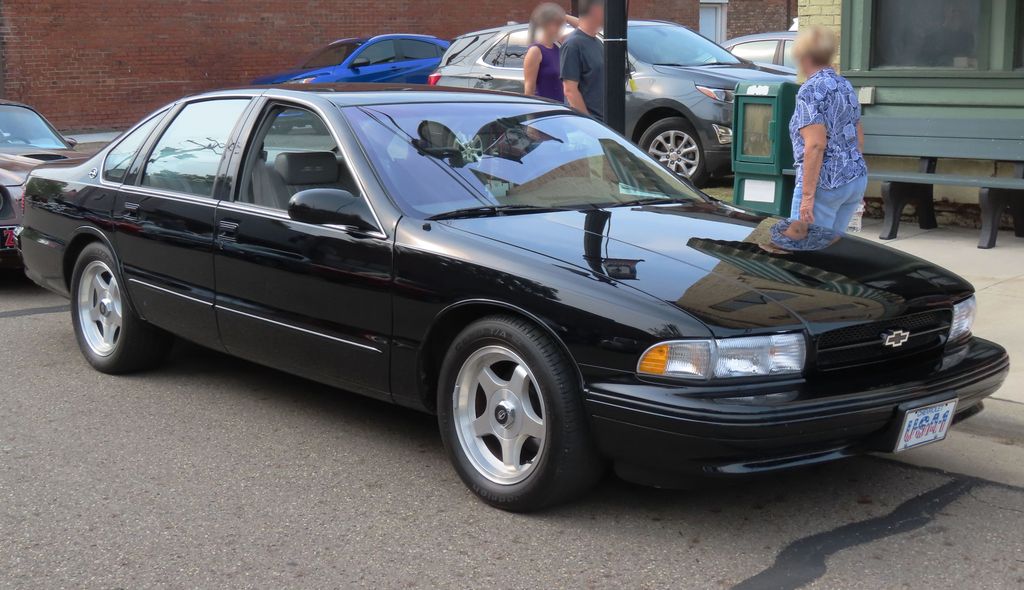
8. **1994–1996 Chevrolet Impala SS**The mid-1990s witnessed a triumphant return of an iconic nameplate that sent shivers down the spines of automotive enthusiasts: the Chevrolet Impala SS. This wasn’t merely a revival; it was a masterclass in combining muscle car bravado with a stealthy, full-size sedan practicality. Chevrolet ingeniously transformed the ordinary Caprice, dropping in a hopped-up LT1 V8 engine, effectively creating a “sleeper” sedan that quickly resonated with a legion of buyers who desired formidable performance without screaming about it.
Under its discreet exterior, the Impala SS housed a robust 5.7L LT1 V8, a direct descendant of the Corvette’s revered engine, expertly tuned to produce a healthy 260 horsepower and ample torque. This substantial power output was mated to heavy-duty suspension and brake systems, many components borrowed directly from the police-package Caprices, ensuring that this large sedan could handle its newfound performance with confidence and stability. While black emerged as the most iconic and recognizable color, the Impala SS was also offered in sophisticated dark gray green and rich dark cherry metallic, adding to its understated allure.
Produced for a mere three model years, the Impala SS carved out a unique legacy, consistently achieving low 15-second quarter-mile times—a remarkable feat for a vehicle of its size and class. Many consider this vehicle to be the last great body-on-frame, rear-wheel-drive American sedan, representing the culmination of an era. As its production concluded, so too did a significant chapter in the history of large American V8 sedans. Today, well-preserved examples of the Impala SS command a passionate cult following, celebrated for their unique blend of power, style, and enduring American automotive heritage.
Car Model Information: 2022 Mazda CX-5 2.5 S Premium
Name: Chevrolet Impala
Caption: Fourth generation model (1967)
Manufacturer: Chevrolet
Production: 1957–1985,1994–1996,1999–2020
ModelYears: 1958–1985,1994–1996,2000–2020
Predecessor: Chevrolet Bel Air,Chevrolet Lumina#Second generation (1995–2001)
Successor: Chevrolet SS,Chevrolet Caprice
Platform: GM B platform,GM W platform,GM W platform (GMX211) (2005–2013),GM Epsilon platform#Epsilon II
Class: Full-size car,Mid-size car
Layout: Front-engine, rear-wheel-drive layout,Front-engine, front-wheel-drive layout
Categories: 1960s cars, 1970s cars, 1980s cars, 1990s cars, 2000s cars
Summary: The Chevrolet Impala () is a full-size car that was built by Chevrolet for model years 1958 to 1985, 1994 to 1996, and 2000 to 2020. The Impala was Chevrolet’s popular flagship passenger car and was among the better-selling American-made automobiles in the United States.
For its debut in 1958, the Impala was distinguished from other models by its symmetrical triple taillights. The Chevrolet Caprice was introduced as a top-line Impala Sport Sedan for model year 1965, later becoming a separate series positioned above the Impala in 1966, which, in turn, remained above the Chevrolet Bel Air and the Chevrolet Biscayne. The Impala continued as Chevrolet’s most popular full-sized model through the mid-1980s. Between 1994 and 1996, the Impala was revised as a 5.7-liter V8–powered version of the Chevrolet Caprice Classic sedan.
In 2000, the Impala was reintroduced again as a mainstream front-wheel drive car. In February 2014, the 2014 Impala ranked No. 1 among Affordable Large Cars in U.S. News & World Report’s rankings. When the 10th generation of the Impala was introduced for the 2014 model year, the 9th generation was rebadged as the Impala Limited and sold only to fleet customers through 2016. During that time, both versions were sold in the United States and Canada. The 10th-generation Impala was also sold in the Middle East and South Korea.
Get more information about: Chevrolet Impala
Buying a high-performing used car >>>
Brand: Chevrolet Model: Impala SS
Price: $25,680 Mileage: 32,780 mi.
Read more about: Unleashing the Beasts: The 10 Rarest American Cars of the 1990s – Muscle, Innovation, and Collectible Icons
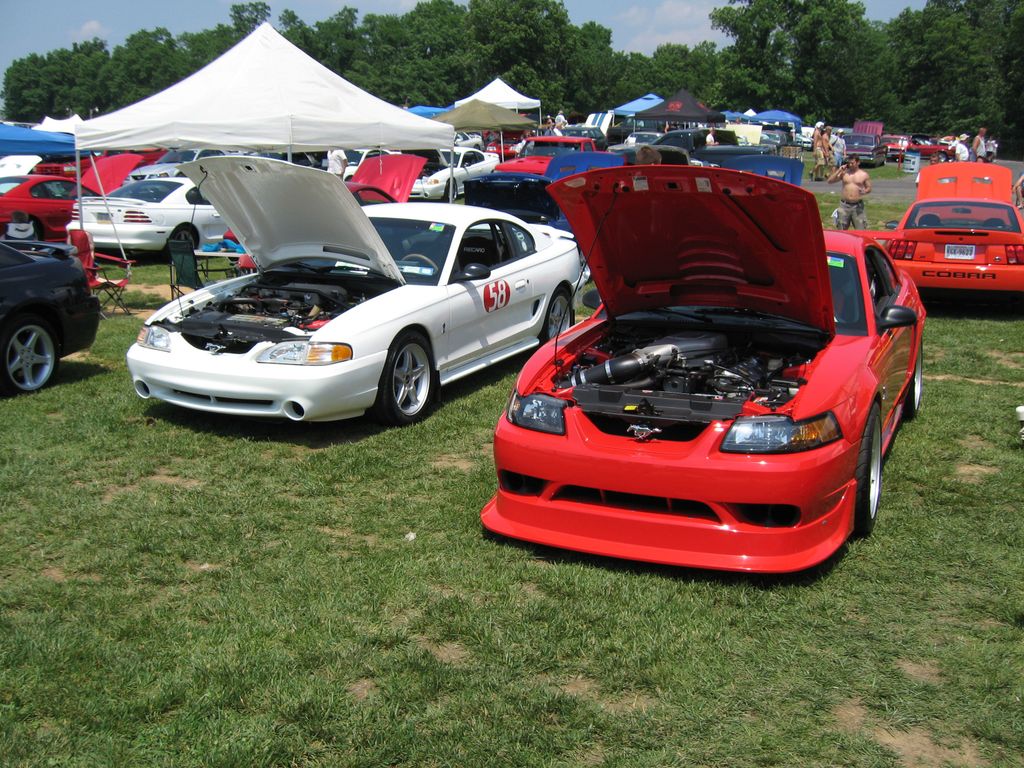
9. **1995 Ford Mustang SVT Cobra R**Building upon the foundation laid by its Fox-body predecessor, Ford’s Special Vehicle Team (SVT) once again pushed the boundaries of Mustang performance with the introduction of the 1995 SVT Cobra R during the SN-95 generation. This was not a car for the faint of heart; it was a meticulously engineered, stripped-down, track-focused machine designed with one singular purpose: unadulterated speed and ultimate handling. Like the earlier Cobra R, this iteration featured even greater engine displacement, promising an even more profound punch for dedicated enthusiasts.
At the core of the 1995 Cobra R’s formidable capabilities was a potent 5.8L Windsor V8 engine, meticulously rated at approximately 300 horsepower. This represented a significant power bump over the standard Cobra’s 5.0L unit, translating into a more authoritative surge of acceleration. To achieve its unwavering focus on race performance, the Cobra R embraced a philosophy of uncompromising minimalism. Luxuries like a back seat, radio, and even air conditioning were completely omitted, allowing for drastic weight reduction and maximizing its track prowess.
The exclusivity of this machine is undeniable, with only 250 units ever produced, each proudly sporting a distinctive white paint job complemented by a saddle interior. This limited production, combined with its impressive stock performance—capable of high 13-second quarter-mile times—solidified its status as a formidable contender, overshadowing many contemporary sports cars. The 1995 Cobra R stands as a clear signal of Ford’s unwavering dedication to crafting track-worthy Mustangs, serving as a defining blueprint for future limited-run, performance-focused models like the 2000 Cobra R or the revered modern Shelby GT350R. Collectors avidly seek these vehicles for their profound rarity and their purposeful construction, recognizing them as true icons of Ford’s performance lineage.
Car Model Information: 2022 Mazda CX-5 2.5 S Premium
Caption: 2004 Ford Mustang SVT Cobra
Name: Ford SVT Mustang Cobra
Manufacturer: Special Vehicle Team
Production: 1993–2004 (79,958 produced)
Class: Pony car
BodyStyle: 1993:,hatchback,coupe,convertible
Successor: Shelby Mustang#2007.E2.80.932009 Ford Shelby GT500
Platform: Ford Fox platform
Layout: Front-engine, rear-wheel drive layout
Categories: 2000s cars, All articles with specifically marked weasel-worded phrases, Articles with short description, Articles with specifically marked weasel-worded phrases from July 2025, Cars introduced in 1993
Summary: The Ford SVT Mustang Cobra (also known as “SVT Mustang Cobra, SVT Cobra,” or simply as “Cobra”) is a pony car that was built by American automobile manufacturer Ford Motor Company’s Special Vehicle Team division (or SVT) for the 1993 to 2004 model years.
The SVT Cobra was a high-performance version of the Ford Mustang and was considered the top-of-the-line variant, being positioned above the Mustang GT and Mach 1 models during its production run. On three occasions, the race-ready, street-legal SVT Cobra R variant was produced in limited numbers.
The SVT Cobra was succeeded by the Mustang Shelby GT500 which was introduced for the 2007 model year.
Get more information about: Ford Mustang SVT Cobra
Buying a high-performing used car >>>
Brand: Ford Model: Mustang SVT Cobra R
Price: $25,680 Mileage: 32,780 mi.
Read more about: Unleashing the Beasts: The 10 Rarest American Cars of the 1990s – Muscle, Innovation, and Collectible Icons
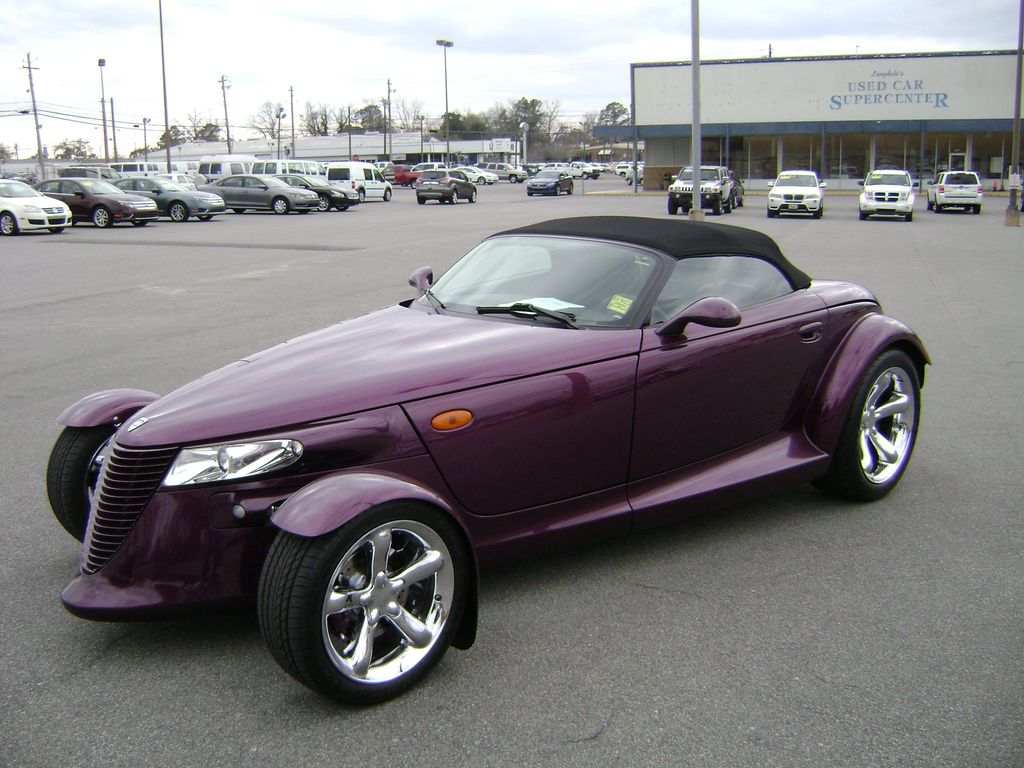
10. **1997 Plymouth Prowler**To conclude our journey through the 1990s muscle car landscape, we arrive at a vehicle that defied classification and truly embodied design audacity: the 1997 Plymouth Prowler. This was a car that looked less like a production model and more like a rolling concept car, a bold statement piece for Chrysler’s design bravado in the late 1990s. With its unmistakable hot-rod design cues—exposed front wheels, exaggerated fenders, and a distinct low-slung profile—the Prowler was designed to turn heads and spark conversations, challenging conventional automotive aesthetics.
While its visual presence was undeniably captivating, the Prowler’s powertrain was perhaps its most debated aspect. It featured a 3.5L Single Overhead Cam (SOHC) V6 engine, producing between 214 and 253 horsepower depending on the model year. This was paired with a 4-speed automatic transmission that included an Autostick manual mode. Though not a fire-breathing V8 muscle machine in the traditional sense, the Prowler demonstrated an innovative approach to vehicle construction, utilizing extensive amounts of aluminum in its frame and body panels—a significant engineering choice that hinted at future mainstream applications of lightweight materials.
Production numbers were intentionally niche, with approximately 3,921 units manufactured under the Plymouth brand in 1997 and 1999, and additional units produced later under Chrysler post-2001. The Prowler’s unique retro styling ensures it remains a standout at any car show, a testament to Chrysler’s willingness to take creative risks. Although it may not fit the conventional definition of a “muscle car,” the Plymouth Prowler is undeniably a crucial part of the 1990s push towards expressive design and limited-production flair, embodying the era’s adventurous spirit in automotive artistry.**The Legacy Continues**
Car Model Information: 1997 Plymouth Prowler
Name: Plymouth Prowler
Manufacturer: Chrysler Corporation
Production: 1997–2002,11,702 produced
Assembly: Detroit, Michigan
Class: Sports car
Layout: Front-engine, rear-wheel-drive layout#Front mid-engine, rear-wheel-drive layout
Platform: Chrysler PR platform
BodyStyle: Roadster (automobile)
Engine: Chrysler SOHC V6 engine#3.5,V6 engine
Transmission: Ultradrive#A606/42LE,automatic transmission
Aka: Chrysler Prowler (2000–2002)
Wheelbase: 113.3 in
Abbr: on
Length: 165.3 in
Width: 76.5 in
Height: 50.9 in
Weight: 2800 lb
Successor: Chrysler Crossfire
Designer: Tom Gale (designer)
Caption: 2000 Plymouth Prowler
Categories: 2000s cars, All articles needing additional references, Articles needing additional references from November 2015, Articles with short description, Cars introduced in 1997
Summary: The Plymouth Prowler, later the Chrysler Prowler, is a two-door, two passenger sports car, manufactured and marketed by DaimlerChrysler for model years 1997-2002 — widely known for its hand-crafted aluminum bodywork and its retro-hot rod styling with open, Indy racer-style front wheels.
Based on the 1993 concept car of the same name, Chrysler offered the Prowler over a single generation, with a V6 front-engine, and a rear-transaxle, rear-drive configuration — reaching a total production of 11,702 units.
Get more information about: Plymouth Prowler
Buying a high-performing used car >>>
Brand: Plymouth Model: Prowler
Price: $34,993 Mileage: 9,424 mi.
Read more about: Unleashing the Beasts: The 10 Rarest American Cars of the 1990s – Muscle, Innovation, and Collectible Icons
From the legendary Corvettes and potent Cobras to the muscle-bound sedans and radical, concept-like roadsters, these rare American cars of the 1990s continue to enthrall both seasoned collectors and casual fans alike. They stand as powerful testaments to an automotive era unafraid to innovate, skillfully bridging the raw, older muscle car formula with groundbreaking new engineering frontiers. If you are ever fortunate enough to witness one of these exceptional vehicles—whether at a local car meet or confidently cruising down a highway—take a moment to truly appreciate its profound contribution to the ongoing, dynamic story of American horsepower, technological advancement, and iconic design. After all, what might have seemed experimental or niche during the 1990s often served as the essential groundwork for the exhilarating performance booms and automotive excellence we so readily enjoy in modern times.


